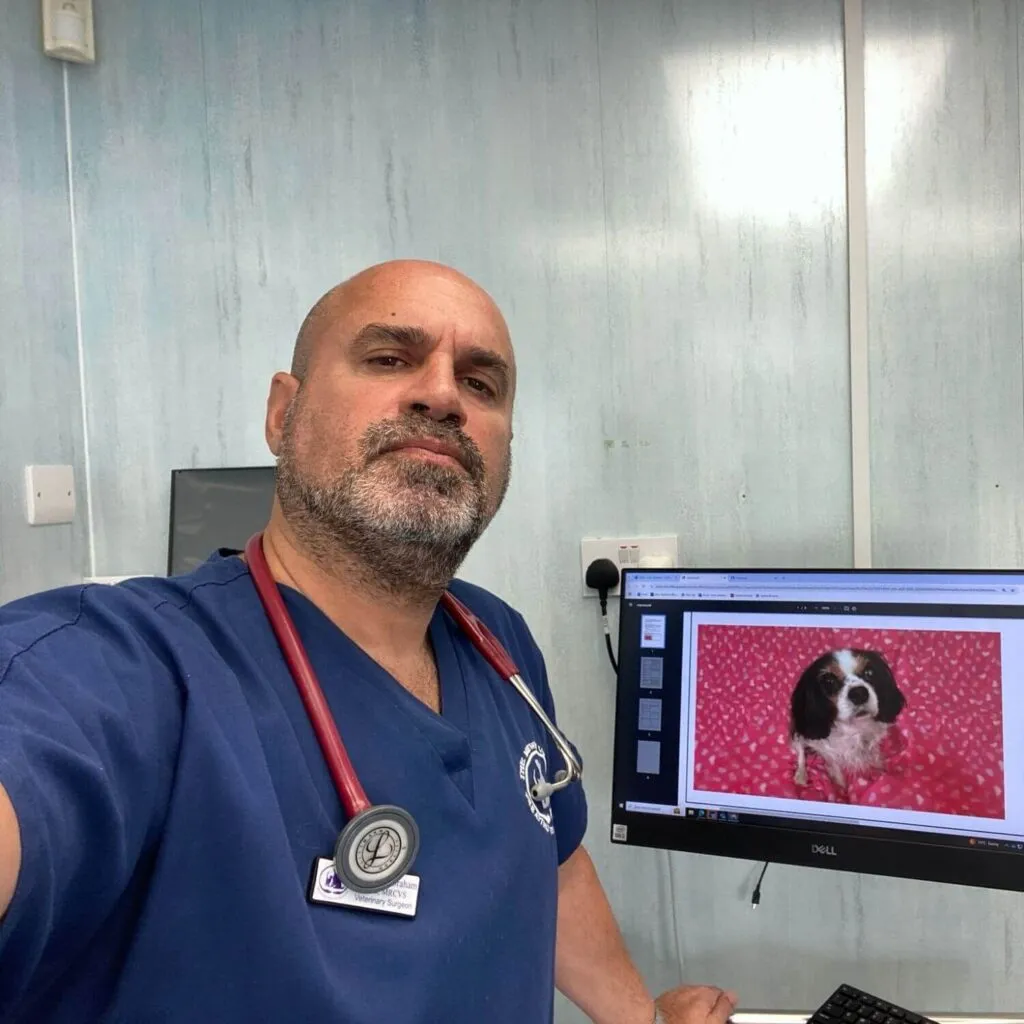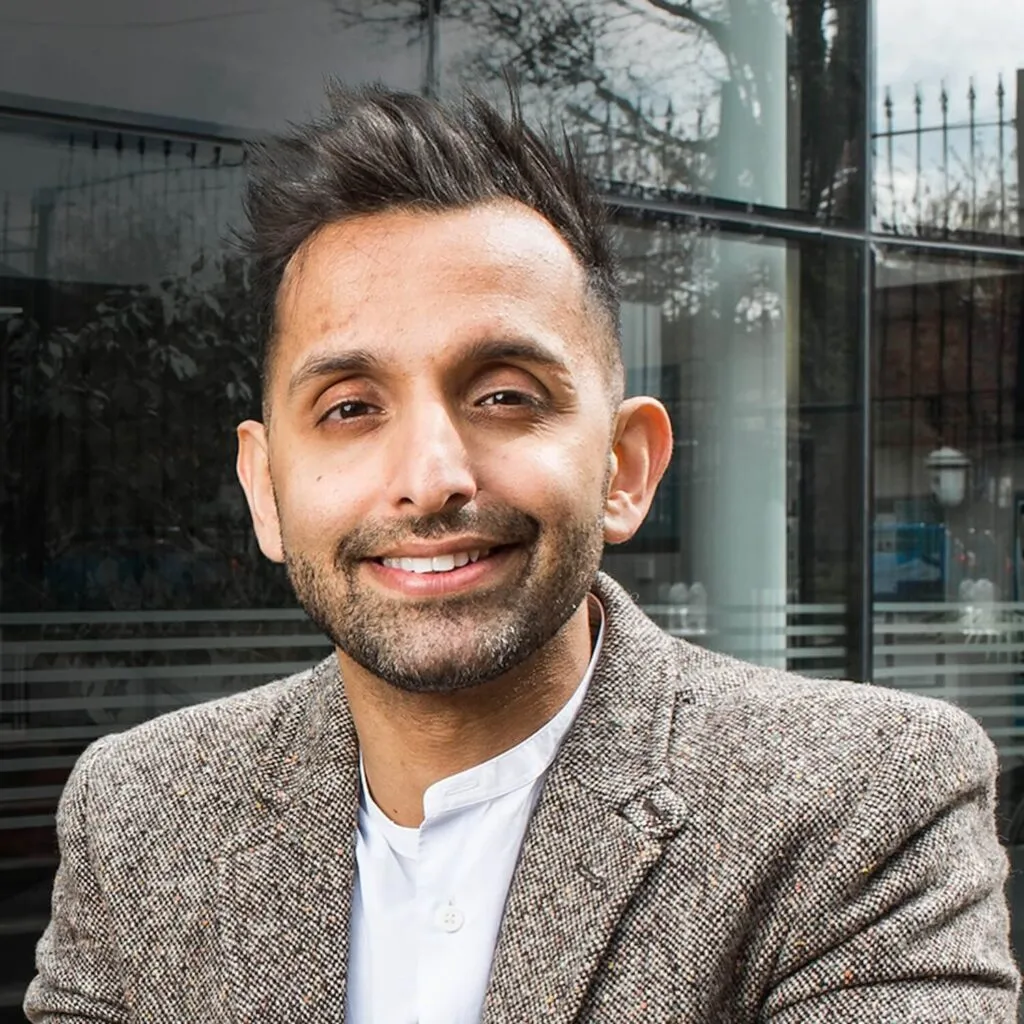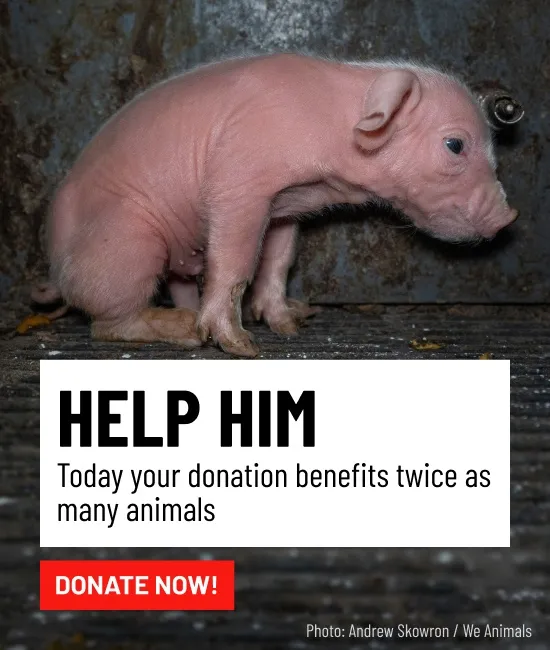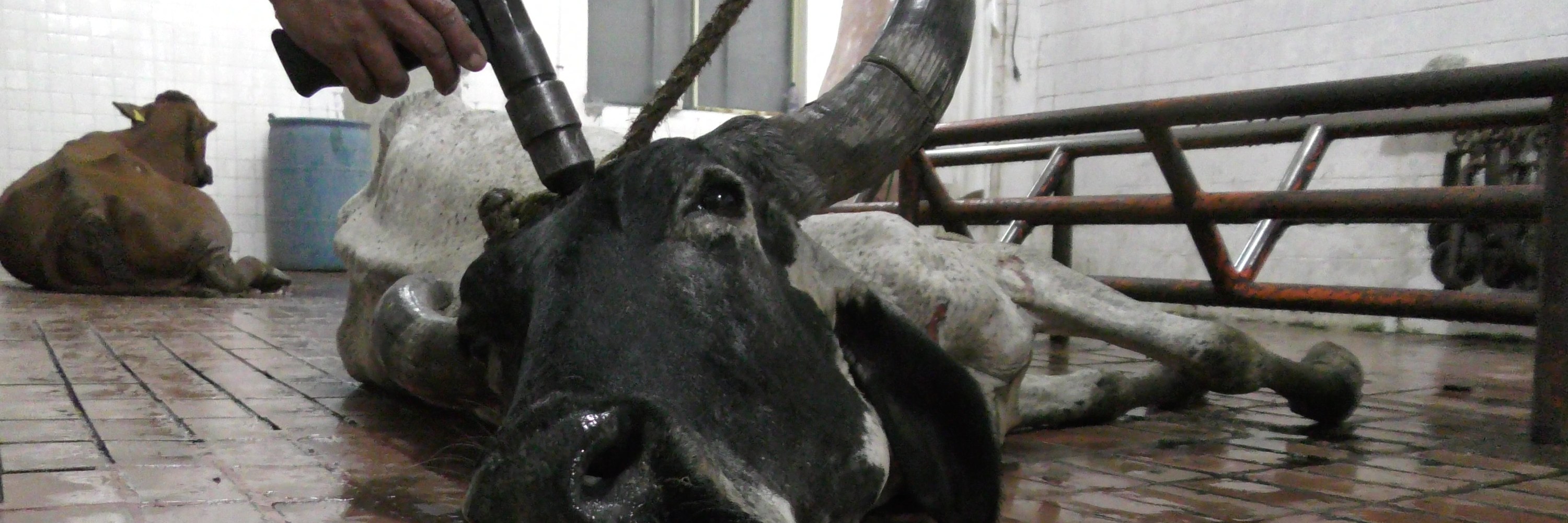
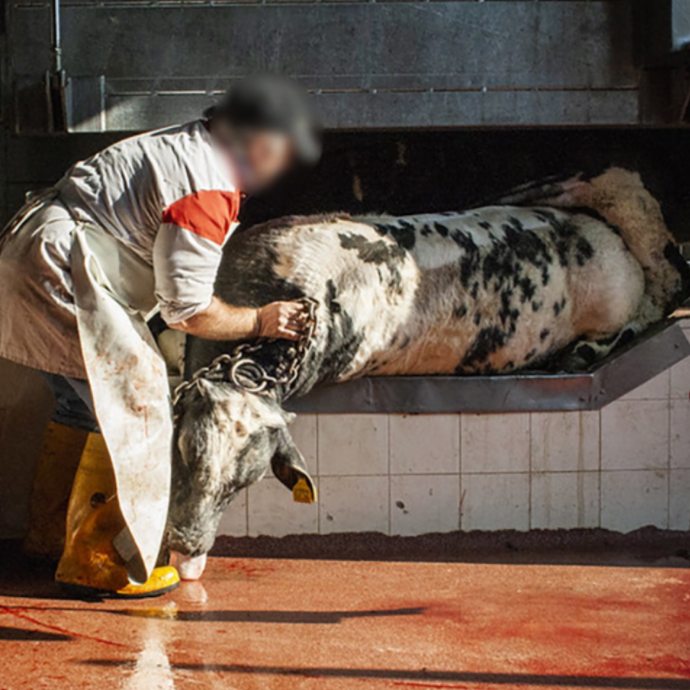
The Shocking Statements Of A Former Slaughterhouse Worker

“The first to be killed are the calves, so they stop calling for their mothers.”
Animal Equality Spain interviewed Mauricio Garcia Pereira, who worked for seven years at a slaughterhouse in Limoges, the largest in France.
After years of working in this horror, Mauricio couldn’t take it anymore and decided to publicly denounce the horror that animals experience in slaughterhouses.
Together with the French animal rights organisation L214, Mauricio Garcia Pereira exposed the horrific reality of the slaughterhouse he was working at.
But he did not stop there and he wrote and published a book entitled ‘Maltrato animal, sufrimiento humano’ (‘Animal abuse, human suffering’) to tell of his experience and expose what goes on behind the closed doors of slaughterhouses.
The effort Mauricio makes to remember and relive this traumatic experience during the interview is visible, but thanks to his courage he has shown the world what happens in slaughterhouses.
Read the interview below.
Please note: the following text has been translated from the original interview transcript in Spanish.
Q: What surprised you most when you started working in the slaughterhouse?
A: The most surprising thing at the beginning was to see how industrialised the work was, like an assembly line in a factory. But killing animals.
From the moment the animal is stunned to the moment it arrives at the refrigeration room, there are 25 work stations in between, with more than 30 people working, everyone doing their part. Just like an assembly line.
At the beginning they make you do the simplest jobs. You are the newcomer and you have no training, so they assign you a place in the chain to observe the work.
If you don’t understand something, you ask. You only observe at the beginning. I started in the ‘easiest’ part – if you compare it with the others, because no job is really easy – of the chain: sucking the bone marrow out of the animals.
Q: What does the slaughter process involve?
A: The chain is divided into two:
- The ‘dirty zone’, where the animals arrive and are killed.
- The ‘clean zone’, where the skin is removed, and the head and legs are cut off. At this stage you have to be careful not to contaminate the meat.
I used to work here: with the task of inserting a plastic tube in the neck of the animal to suction the bone marrow out. I had to do this on 35 cows per hour, to give you an idea of the speed of the assembly line. You have one and a half minutes to suck the bone marrow out of each individual animal. You finish with one, the alarm goes off, you start with the next one.
Q: In the ‘dirty zone’, where the animal’s life is taken from them, do you think the animals know that they are going to die?
A: Yes, of course, they are afraid, they are sensitive beings, they feel emotions. You can already see when the trucks arrive they don’t even want to get off as if they could smell it because they have such sensitive noses to smells. There are always 3-4 employees who jab the animals with an electric prod to make them get off the truck or pull them painfully by the tail.
Some frightened animals don’t want to come down or move forward. In the slaughterhouse where I worked, cows and calves were killed and once separated you could hear them crying to each other all morning. That’s why the first to be killed – at 5 am – are the calves, so they stop calling for their mothers. You can still hear them even if you have soundproof headphones on and there’s machinery noise and they’re on the other side of the plant.
Q: If they showed this in the advertisements the consumption of meat would drop… I imagine it was terrible for you to experience all this.
A: I never wanted to work in the ‘dirty area’, to send the animals down the ‘corridor of death’, to the ‘box’. I have always worked at the end of the chain. I would have preferred to work in the ‘gut’ – where guts and internal organs are removed – and you are in contact with guts and excrement all day long. Half a kilometre away you can already smell it, it’s really terrible, but I’d rather be in the sh*t than unloading animals and seeing them die.
“If death has a smell, it is the smell of a slaughterhouse.”
Q: Because of the brutal and traumatic experience, studies show that often people working inside slaughterhouses turn to alcohol and drugs to forget what happens. Is that true, in your experience?
A: Of course, that’s one of the first things that shocked me. When I arrived on the first day, when they gave me the job I met the Production Manager, who was the Director’s right-hand person. I went into his office and he had a cupboard behind him, on top of the cupboard empty bottles of whisky, as if they were trophies. I later found out that every Friday they would take an aperitif to do the briefing for the whole week, the top managers – five people in total – get together and drink whisky.
What is consumed the most is alcohol. I also saw a lot of drug consumption and I admitted it in the book: I myself took drugs that my colleagues had brought, to forget and to bear the pain. I know what it means to have animals, I grew up on a farm and I grew up loving these animals, when you see what happens to them in slaughterhouses it’s a radical change.
Q: In your book, you say that you witnessed how a cow was killed when it was pregnant, almost ready to give birth… and then you found the foetus of a baby calf and it affected you so much that you reported it to the director, at which point you found out that it was considered normal. Can you speak more to this?
A: I thought it was a mistake, that a check had been missed. Next to my workstation was the section where they extract the entrails (intestines or internal organs). Pregnant cows are killed in the last half hour of work, they are the last to be killed and this is done deliberately. Sometimes I would see a red bag on the side of their stomach, which I later realised was the placenta. One day my colleague accidentally opened the ‘red bag’ and I saw a calf’s leg and realised she was pregnant.
I couldn’t say anything, I just did my job. It wasn’t until several months later, when I signed the permanent contract, that one summer they sent me to process the slaughterhouse waste and there I realised that, at the end of the day, along with the intestines, there were also placenta and foetuses, many of which are very small, – sometimes the size of your hand, and other times they were ready to be born. I had to throw them away with the rest of the waste. So I asked about it, and they said that’s how it works.
Q: Did this happen normally?
A: It is a common practice in some countries to prevent the price of meat from going up and to make the cows ‘fatten up’ quickly, so when they are pregnant it allows the cows to reach slaughter weight faster. Pregnant cows are usually slaughtered at the last minute, before closing time, because they are more docile and because the foetuses, often already very large, fill the disposal containers very quickly.
Q: You are an example for other workers who are now in the position you were in, who think “what can I do? What I see terrifies me and I want to report it”. Could you tell us how the reporting process went for you: how did you organise yourself, what happened when the news came out and when your complaint was made public?
A: In 2016 I denounced the industry publicly. I wanted to do it earlier, as early as 2014. I had already taken photos with my mobile phone, photos of calves ready to be born in the middle of rubbish. How can you call a calf ready to be born ‘rubbish’? I wanted to report it already at that time. For almost a year I was asking questions to clients, veterinary services, small farmers: why are they doing this? It’s not normal, why is this happening systematically? Approximately 300 to 400 cows killed per day, among them why did you decide to kill 20-30 pregnant cows?
But I wanted to denounce the whole system, not just the slaughter of pregnant cows. I didn’t have any support in 2015, I had asked some friends and they told me that “that’s how it works, it’s disgusting but that’s how it is and there are more important things”. Even my family told me: “if you can’t stand it, resign and look for something else”. But I didn’t want to. I had to denounce the industry and do something about this. Moreover, in almost seven years there, I saw that accidents at work, physical illnesses due to work (tendonitis, back pain, cervical pain) and psychological problems were frequent. It was all ‘part of the job’.
I found out about L214 on TV because they had filmed in a slaughterhouse denouncing irregularities, which surprised me. The presenter said there were strong images. But when I saw the images I almost laughed: does this seem harsh to you? Violence such as kicking animals to make them move, throwing lambs to make them move… I thought, this is harsh?! So I contacted them and they gave me a camera and I was able to film what was going on.
The footage was then published in the newspapers, on TV. It had a huge impact on the media and on people, and then they suggested I write an autobiography. The publisher told me: you are an ordinary person who has done something extraordinary and I want to tell your life story.
Q: Without your courage, what goes on inside this particular slaughterhouse would likely have never been brought to light.
There are no outside eyes in those places, but another problem is that there is little supervision to make sure that at least the minimum European animal welfare standards are respected, and if there are inspections, often the abattoirs are notified beforehand. As someone who has worked there, can you tell us if this is true? Are there inspections? How exactly does it work?
Q: “It is easier to enter a nuclear submarine than a slaughterhouse”, said a former French agriculture minister. Not just anyone can come in, only if you are a person interested in working in that field, but you still have to be supervised. You can’t go in and see what you want anyway, they only show you what they want to show you. As far as the veterinary services are concerned: they have insufficient regulation, they often only check that things are okay to allow consumption by humans, but otherwise, there is no control, from the moment the animals are loaded onto the farms and even when they arrive at the slaughterhouses to be dropped off. There are animals that arrive but should not even get there as they are so sick.
I’ve seen animals on their way to the slaughter-person’s knife who couldn’t even get up, and if the animals can’t get up the workers often hit and pull them. We would put a rope around the animal’s horns and 20 of us would drag them, drag them to take them to the box where they were killed.
I still have nightmares, I still hear their cries, I see the calves thrown into the rubbish, I see the animals hanging.
Mauricio Garcia Pereira was the voice of millions of innocent animals. He had the courage to speak out against this industry after years of working in a slaughterhouse. It would have been easier for him to quit his job, keep quiet and leave. But his determination and courage allowed the truth to be made public.
The truth remains the strongest weapon at our disposal. Only through our investigative work can we continue to bring to light what is hidden behind the closed doors of farms and slaughterhouses. Otherwise the only voice in the field would remain that of the animal agriculture industry.
We will continue to infiltrate slaughterhouses with our cameras to document the truth and expose the cruelty of these places with new evidence.
But we need your help to show what we find to the world and create tomorrow’s change.
Support those who fight on the front line for animals every day.
Recommended
